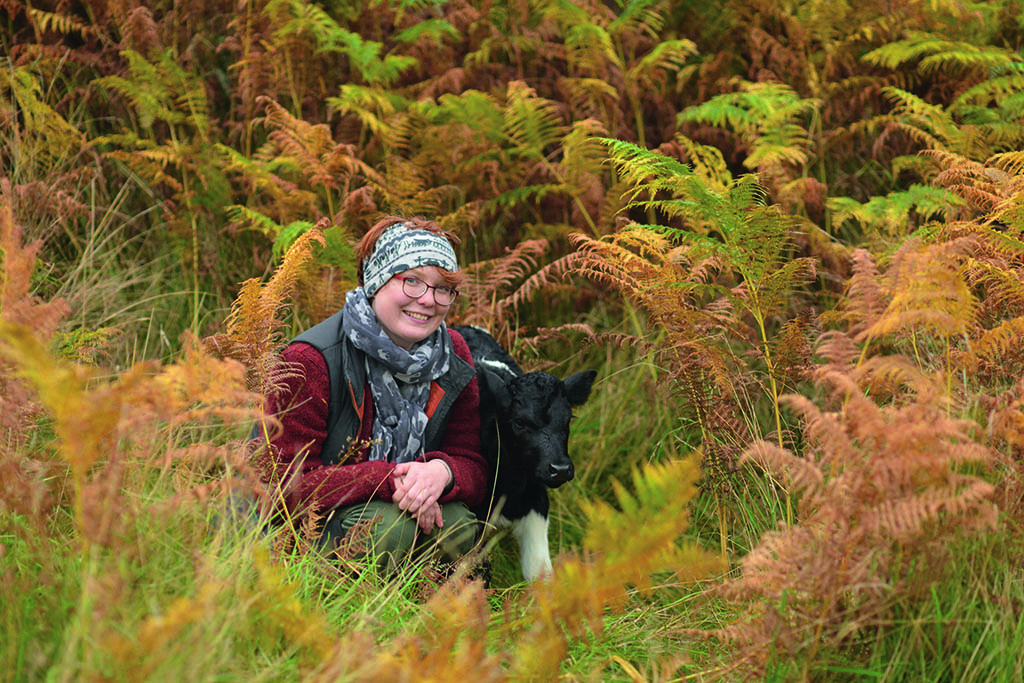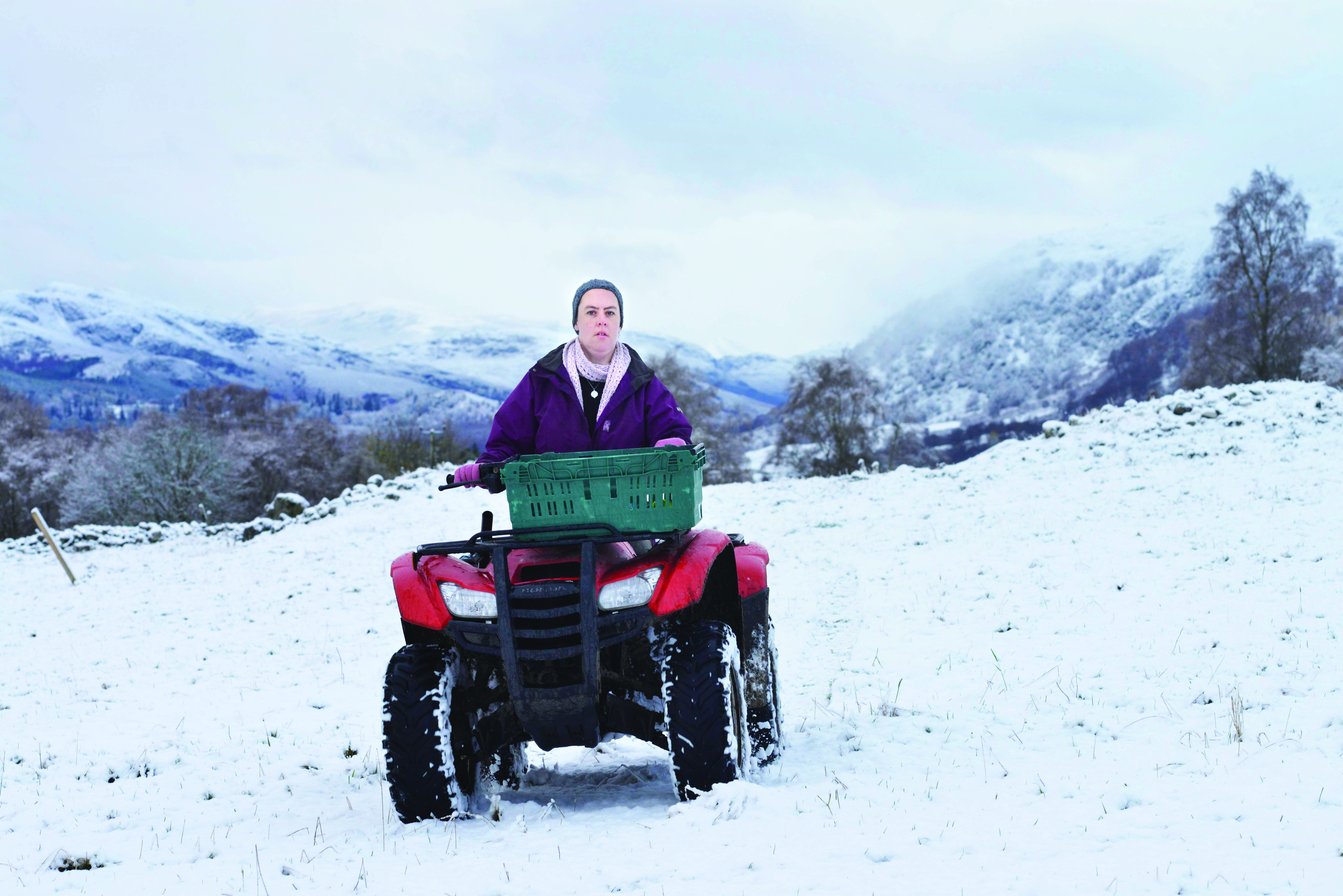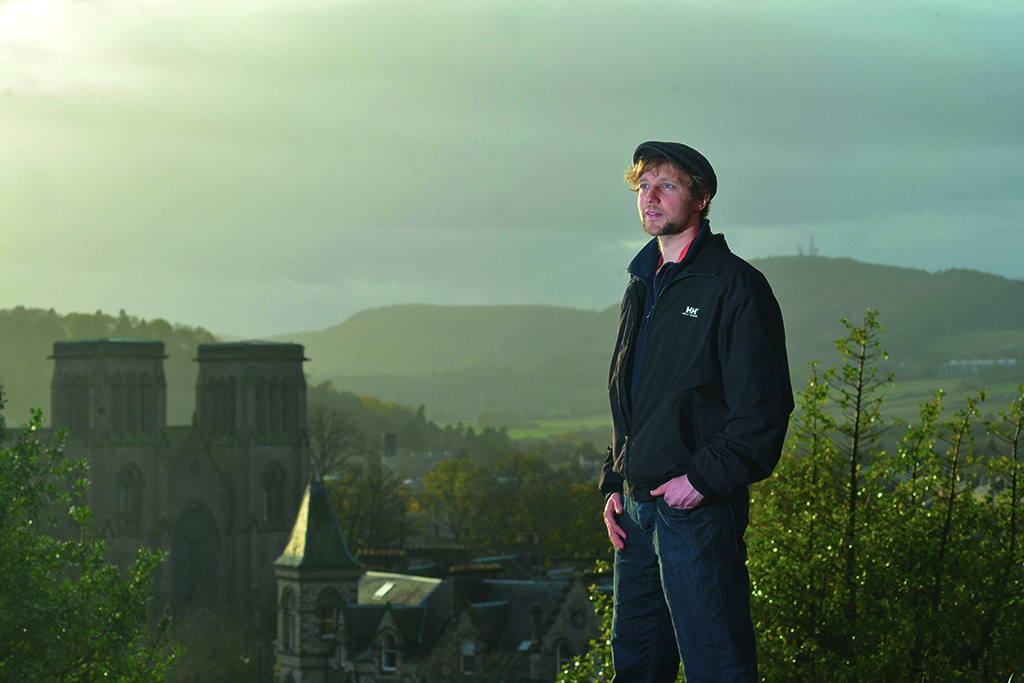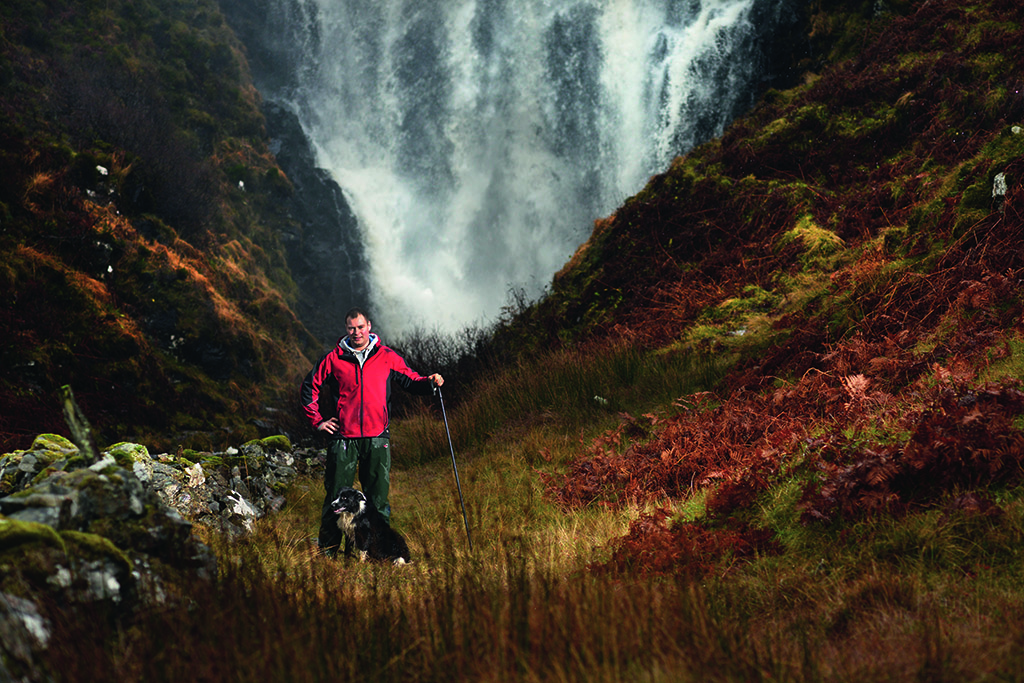
Croft originals – we speak to five young crofters
Five young people who have taken up crofting tell Scottish Field what made them choose this difficult but rewarding life.
Crofting, the historic system of smallscale food production, protects land and helps keep rural communities populated.
Integral to the culture of the Highlands and Islands, it’s also hard work and rarely viable as a sole income; and as such more crofts are lying vacant. Fortunately a new wave of young people are determined to keep it going.
The Young Crofters branch of the Scottish Crofting Federation, whose members range from aspiring and new crofters to those born into it, want to learn from their elders while lobbying for greater access to croft land. Here are some of their stories.
DONALD MACSWEEN
My family have a couple of crofts and I was given one of them for my 21st birthday.
It was the best present I ever got. It was my default position that I was going to be a crofter. I work part-time for the council and I also do freelance media stuff for BBC Alba, which makes for a good balance – it’s something completely different to working on your own on a croft.
I’ve got sheep like everybody does in Lewis and Harris. That’s my true love when it comes to crofting, but this past year has been the worst I’ve had with them. The ground was horrendous – it was cold and wet until mid-June and we didn’t have any grass growing. It was really hard going. About a month ago I got my pick-up stuck in the croft on a particularly wet day. I was furious and did think, ‘Why am I doing this?’
You get days like that, but you get days like that in any job and it passes a lot quicker in crofting than in any other work I’ve been involved in. I love the community aspect of crofting; we all help each other. There’s a guy in our village in his 70s who’s not as mobile as he used to be. I give him a hand with stuff, and he’s very experienced so he gives me advice – it’s a good trade.
I have brought new ideas that have made my parents pull their hair out at times, but I know what will work and I just have to break it to them gently. There’s no point reinventing the wheel, though; young people or people who are new to crofting can come to it thinking they have this great new way, but they rarely do.
The best example I can think of is peatcutting. You get lots of people who move to our island and think ‘I’ve got this way of cutting peat,’ but people here have been cutting peat with a tairsgear (a peat iron) for generations and we’ve perfected it. It’s the same with crofting.
There are ways of doing things you can’t learn from a book. You need to speak to the people who’ve been doing it for years. There’s a lot to be gained from that; not just advice, but support, motivation and confidence too.
In the past year I’ve started selling eggs. I’ve got 350 hens and I’ve another 300 coming. The poultry industry in Lewis disappeared because we had problems with mink that had been released, but Scottish Natural Heritage had a successful mink eradication project.
I’ve also done a bit of croft tourism. I’m agood talker and I enjoy talking about the croft. I just hope that others will be interested. I think it’s useful for the island that people get a taste of real life rather than only having the stereotypical image. There’s a lot of stuff that appears in the media and I think, ‘that’s not the island I know, that’s not the life I know’. You have to show the bad with the good. Where there’s livestock, there’s dead stock, for example. I think it’s important to show that side too.
MADDY NORVAL

Maddy Norval, who took over her croft in Rogart in Sutherland in 2014 (Photo: Angus Blackburn)
I grew up in Cullen on the Moray Firth coast and I’d never been north of Inverness until my partner Rob and I started looking for some land. We bought our croft 15 months ago now and we’ve been working really hard at trying to learn everything about crofting.
We got into it because we wanted to be able to raise our own meat and know that the animal welfare was as good as it could be. It’s kind of ‘pasture to plate’ – we wanted to follow the animal from birth to death and into our stomachs. We were really looking for sustainability.
We had a big garden in the house we were in before – we grew vegetables and I had a wee studio from which I ran Magweno Art Dolls. We had a few chickens too, but it just wasn’t big enough. We always wanted a patch of land. Rob used to be a chef so we only got occasional days off together, but when we did we’d grab the opportunity and go driving all over Scotland looking at bits of land and then one weekend we found our croft.
At the time we didn’t know what a croft was, so when we began to think about buying it we had to do all the research into the legislation. That’s when we found out about this incredible culture that goes along with it – all the history and the protection that a tenant has.
Now we have the space to kind of spread out and play around with different land manage ment practices. So we’ve got space for a polytunnel, we’ve got room for some cows and sheep, and as many geese as we want.
At the moment, we’re focusing on sheepskin rugs. You get some really interesting-coloured sheep, so we’re going to try to cross-breed a few and sell them as rugs. It’s about using every single part of the animal as well. Usually the skins just get thrown away but actually that’s going to be our main profit, and the meat that comes off them is going to go straight into our freezer.
We’re planning to do some eco tourism too, with ‘glamping’ shepherds’ huts. It is quite low investment but high profit, so that will hopefully get us on our feet.
Working the croft fits in well around what I do, making the dolls and creatures, which is very flexible, although animals do have a tendency to throw things in your way when you don’t need them. Sheep get stuck, cows cross fields, and we’ve had some problems with an escaped bull. It is a massive learning curve, but it is everything I dreamed of – and the things I didn’t dream of too. Rob works for a building company during the week, which means we have to do the croft at evenings and weekends.
I’ve yet to meet a crofter who makes all their money from their croft; it’s not generally financially viable for more than a secondary income. There has been the odd thing in the media recently about crofting that makes it seem a bit airy-fairy, living the good life, that kind of thing, but the reality is quite different. There’s a lot of muck, I’m always covered in cow poo and it’s very hard work. That’s all part and parcel of it, but it is also part of the fun.
VIV MONTGOMERY

Viv Montgomery,
who works a croft in
Newtonmore (Photo: Angus Blackburn)
If you’re not from a crofting family, accessing land is difficult. I am from a crofting family but I always thought I’d have to lose my dad before I got a croft. Thankfully that didn’t happen and I was allocated some land a couple of years ago.
I’ve got 56 black-faced ewes and I’m hoping to get my stock up in the next couple of years. My dad keeps his 19 cows on it during the winter and this year I’ll introduce my own cattle. I’ve just not had enough money to do it yet.
I take on cleaning jobs when I can, and help out in a couple of B&Bs. There’s not enough money in the croft but there’s definitely enough work to keep us busy. There is always something to be done, whether it’s moving cattle or checking them or cleaning out chickens. At lambing time I’ll be out from 5am until 10pm.
I would love to see crofting in other parts of the country. Folk are more aware of where their food is coming from these days and everybody wants to be a bit more environmentally friendly. Crofting is definitely in the niche market for that; it gives families a chance to feed and sustain themselves.
Access to land will have to improve. There are an awful lot of crofts that people are living on – so they’re not classed as absent – but they aren’t working them. There’s a need for older croft houses to be done up as well. On my mum and dad’s croft there’s an old house that was my granny’s, then in the 1990s they encouraged crofters to build new houses rather than to use the old ones. My parents moved into a new house, which was built in the 1990s, so the old house is standing derelict. It’s quite common and something needs to be done because it’s a waste. Even if it is not for the crofting families themselves, there’s always a need for housing for folk in the local communities.
I try to make sure that kids from the other crofting families have the skills that they need so if they ever decide they want to croft then they can. It is something that the older generation made sure we had, so it’s right that we carry that on and we need an active crofting community there for support.
There needs to be better access for new crofters to get involved too. At the Young Crofters we’re trying to come up with a mentor scheme so whether you are from a crofting background or not, you can be linked with townships and crofters. It’s to try to make sure that folk understand the negative side of crofting too and the different things that can affect you.
JAMES SHEWAN

James Shewan, a nurse,
wants a croft but can’t
afford it. (Photo: Angus Blackburn)
I’m an aspiring crofter. I’ve wanted to get hold of a bit of land for a while. It’s a lifestyle thing, really. I like growing my own stuff and connectingwith the people in the countryside. I’d like to keep it pretty small scale, so maybe a cow and a few sheep. Maybe I’d have enough to sell at a wee market stall, but the idea is it would be something I could work around my nursing.
I was always interested in the outdoors and when I went to university I learned about the history of the Highlands. It can be quite a bleak and empty place, but it wasn’t like that hundreds of years ago. A lot of that has been forced. So I’m quite attracted to the idea of getting people back into those communities and working on crofts again that have gone to ruin.
At the moment there are lots of empty crofts and there are a few reasons for that. There are no jobs to help people stay – unless you’ve got a lot of croft land you can’t raise enough to sustain yourself economically, so it’s just not viable.
Secondly, it’s so hard to get hold of the crofts of people who are maybe not doing anything with them and people can’t afford to buy crofts. You have to put up the capital straight away and it’s a lot of money.
I’m chair of the Young Crofters branch of the Scottish Crofting Federation and there are quite a few aspiring crofters in the group. The biggest hurdle we face is the financial issue of how to afford it. For people like myself who don’t have a family connection, it’s very hard.
I’m passionate about getting there, though. I have come to the conclusion that I’m going to have to do it with other people, so there’s a group of us in Inverness and we’re looking at getting a community croft. The idea is that we would buy some land together and then split it into different crofts. I work long shifts three days a week, so the benefits of working in a community would be that when I’m at work someone else can do some stuff for the animals, and then I would return the favour.
I think it could be quite an exciting thing because it would encourage more young people to come together. It’s also creating little crofting townships which were commonplace 200 years ago, and you’re potentially bringing three or four families back into the rural areas.
JAMES MORRISON

James Morrison got his croft in Culkein, near Lairg in Sutherland,
from family members. (Photo: Angus Blackburn)
I’ve taken on my croft from relatives. If I don’t continue it now, it will just go to rack and ruin, which would be a waste. The difference now from when I was a wee boy is incredible. In the village of Culkein itself, where there are not many people, there used to be 1,500 to 2,000 sheep. Now you’d be lucky if we’ve got 600 between everybody. A lot of people have left, others have died.
There are not many young people in the area and the few that remain aren’t showing any interest. That’s not a surprise, really, because there’s an awful lot of work that goes with crofting and when you’ve got to find other employment to keep you going financially, it’s hard to work the two together. Hopefully things like grants for fencing and land maintenance through the Young Farmers might make things easier.
I’ve got 60 breeding ewes at the moment and I’ve got an old relative who has about seven cattle that I help look after as well. I’ll hopefully increase my stock of sheep and maybe venture into cattle in the near future as well. My aim is to expand as much as possible, within reason – as much as the time I’ve got allows.
I wouldn’t have liked to see the croft die out; it was always one of my goals to see it carry on, to try and make a success of it and make it financially viable so it is sustainable for the future. Hopefully future generations can take it on and carry on the traditions.
There’s an awful lot of work involved. On a typical day I’ll get up between 5am and 6am. Feeding happens either first thing in the morning before work, or last thing at night after work when I’m checking everything. We’re out with torches and lights in all weathers, checking everything is fed and fine. I genuinely enjoy it – if I didn’t I wouldn’t have bothered even trying to continue it. Obviously, it needs to be justifiable to a certain degree to carry it on. We’re just surviving at the moment.
The fact that new, young people are wanting to get involved in crofting bodes well for the future. We’re always going to need new blood and young people who are prepared to take up traditions and carry them on. It’s a wee bit unfortunate that if you want to get into crofting you really need to be quite well off before you’d be able to make a go of it. Land and livestock are both very expensive, and there’s not a huge return – it’s a lifestyle choice. It’s quite difficult to get into, but I would certainly support anybody who is interested in getting into it and seeing what they can do.
We mustn’t forget the people who have been born and brought up in crofting either as they also need support. The ground up here is not used for crofting activity, and for people like myself who are in the position to expand – I’ve got two crofts and the use of common grazing – it’s very difficult to get more ground. If this industry is to survive, we’ve got to support people who are in a position to really make a go of it as well as new people who are keen to get involved.
For more information on the SCF Young Crofters branch, go to www.crofting.org
(This feature was originally published in 2015)
TAGS

